In a world where phones offer a filter, sticker or effect for every photo, images can become more dramatic than the real thing.
But there are still places that even Photoshop can’t improve on, where nature’s palette concocts colors that seem unreal, or where designers have turned ordinary neighborhoods into wonderlands.
Here are 25 of the world’s most colorful places. No filter necessary.
1. Great Barrier Reef, Australia
Large enough to be seen from space, the colors of the Great Barrier Reef are glorious enough to challenge Pixar animators.
The coral reefs and islands stretch 2,300 kilometers long, but it’s not just the coral that delights.
The fish add swirls of their own hues as they feed and make their homes there. The reef has become less colorful, though, as warming seas have killed off the coral which are profoundly attuned to ocean temperatures.
Huge swaths of the reef stretching over hundreds of miles bleached out during the last summer, and scientists warn the next great killing isn’t long off.
2. Muizenberg, Cape Town
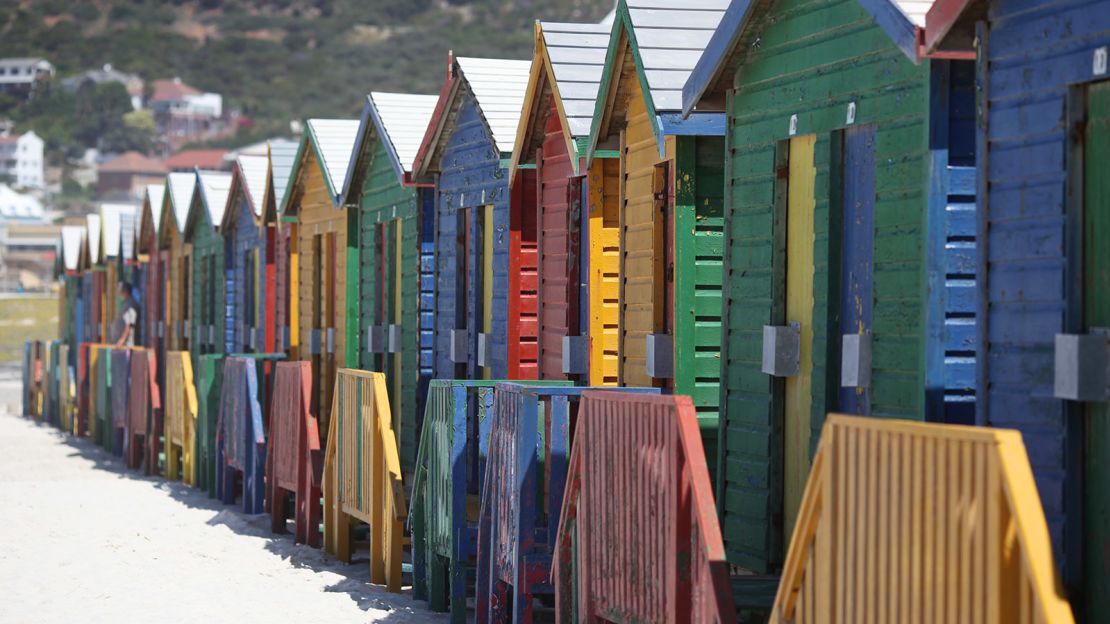
Victorian bathing houses line the broad beach at Muizenburg, painted in bold primary and secondary colors, as if from a kindergarten art set.
The little houses are leftover from the days when women walked to the beach fully, and ornately, clothed and needed a place to change into their slightly less cumbersome swimming gear.
The bathing boxes are now more likely to hold surf boards or a family’s sandcastle construction equipment, but the bold colors retain their link to earlier times.
3. Shibuya, Tokyo
The full glare of modern Tokyo shines down on the intersection outside Shibuya Station, often touted as the busiest intersection in the world.
When the lights turn red, up to 1,000 pedestrians cross the street in every direction at the same time.
Once a tangle of neon signs, Shibuya is now lit by higher-wattage electronic billboards screaming in every hue that a pixel can take.
READ: Total Tokyo: Locals share their tips on Japan’s premiere city
4. Painted Desert, Arizona
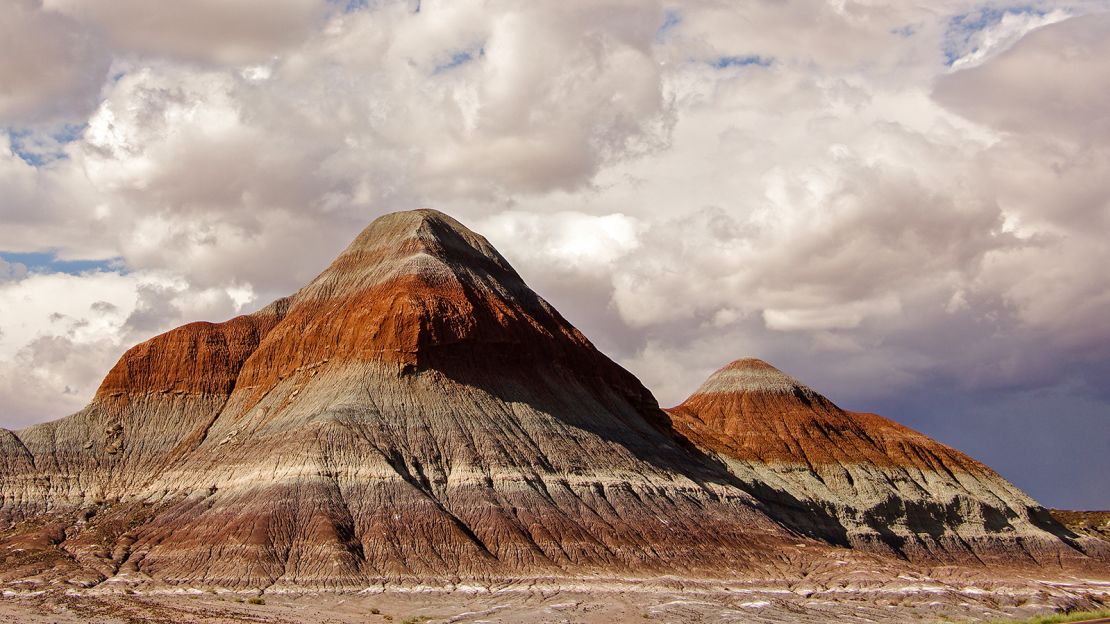
Clay and sandstone worn by the eons into dramatic formations take on unlikely shades in Arizona’s Painted Desert.
Lavender, orange, red, gray and pink tones stretch across the stone in layers of geologic history. The colors change as the sun moves across the sky, but the one that rarely emerges is green. The landscape is beautiful but barren.
5. La Boca, Buenos Aires, Argentina
Famous for soccer, tango and the vivid colors of its houses, La Boca is a curious mix of a neighborhood that’s both genuinely working class and home to several essential tourist attractions.
The cobblestone street known as El Caminito is lined with merrily painted buildings, sidewalk musicians and vendors selling art.
The tango evolved in La Boca, from its mix of immigrants, as did much of Buenos Aires’s slang which is as colorful as the buildings.
6. Moscow
St Basil’s Cathedral, on Red Square’s southern edge, represents Russia as fully as any piece of architecture possibly could.
Often shrouded in snow and shot in grim tones in American movies, the full glory of the 16th-century cathedral can be a revelation for visitors.
Reds, greens and blues in dizzying patterns were added 200 years after the building was completed, covering the original edifice that was disappointingly white.
7. New England in fall
A small industry surrounds New England’s annual autumnal show, helping visitors predict when and where to catch the fall colors at their peak.
The golds, scarlets and purples vary from place to place and from year to year, but exploring is half of the fun, driving through the hills hoping for that perfect landscape of trees that look like they were dipped in a jewelry box and came out gilded.
READ: 20 great places to travel in fall
8. Antigua, Guatemala
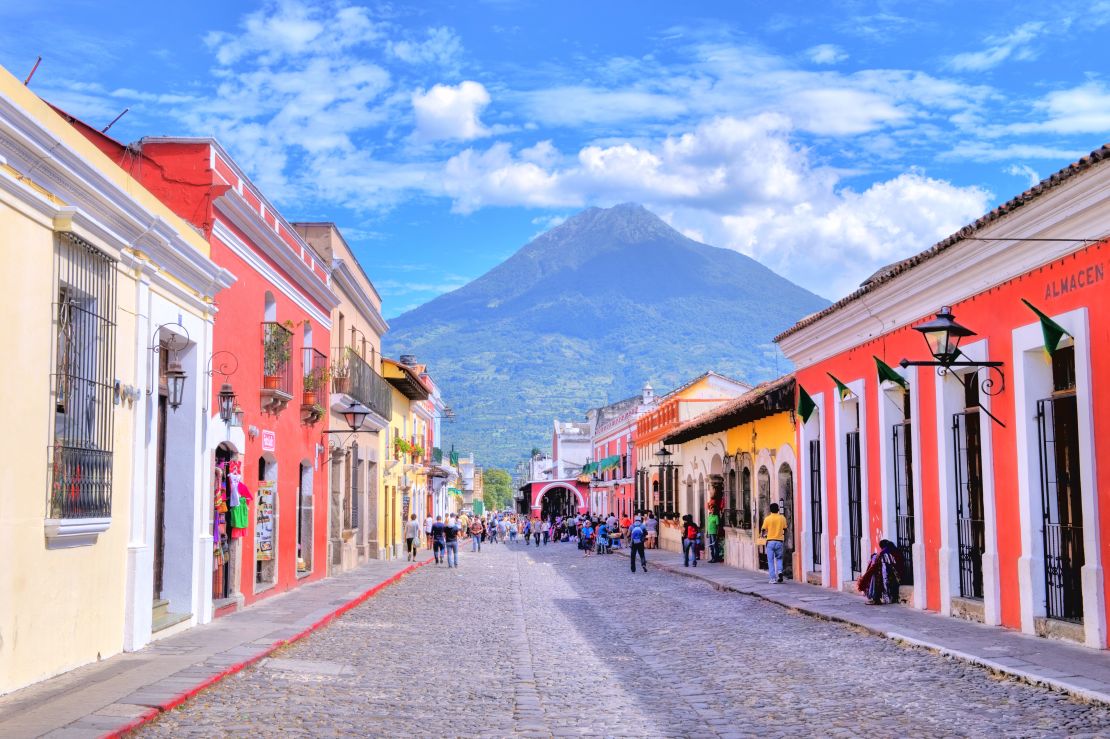
Surrounded by smoking volcanoes and painted in a centuries-old palate, Antigua shows off its colors as they would have originally appeared in colonial times.
The old city is a UNESCO World Heritage Site, and every building is painted in a careful selection of 12 colors – soft yellows, pinks, blues and reds with names like Rojo Santo Domingo or Amarillo La Merced.
When the rain comes, the surrounding mountains burst into greens, setting the city like a flower atop a garden.
9. Damnoen Saduak Floating Market, Thailand
Canoes filled with pink dragon fruits, red rose apples and purple mangosteens drift along the canals in Bangkok’s floating markets.
Among the best is Damnoen Saduak, where vendors paddle their boats early in the morning until the midday heat makes it too unbearable to keep going.
The floating markets attract lots of tourists, for good reason.
They’re a glimpse into Thailand’s past and the almost unthinkable days before cars clogged Bangkok’s streets.
10. Valley of Flowers National Park, India
A photo of the Valley of Flowers in Uttarakhand could at a glance be mistaken for an airbrush painting on velvet of a fantasy landscape, the sort of art once found in Alabama flea markets and now redeemed by the value put on their kitsch.
The valleys in the West Himalayas fill with alpine flowers that astound for their sheer numbers and the variety of species.
Yellows, violets, pinks and oranges just seem too much for nature to have planted in one spot.
Perhaps that’s why the landscape gets mentioned in Hindu mythology.
It’s a place more for the gods.
MORE: India photos: 30 of the most beautiful places
11. Cinque Terre, Italy
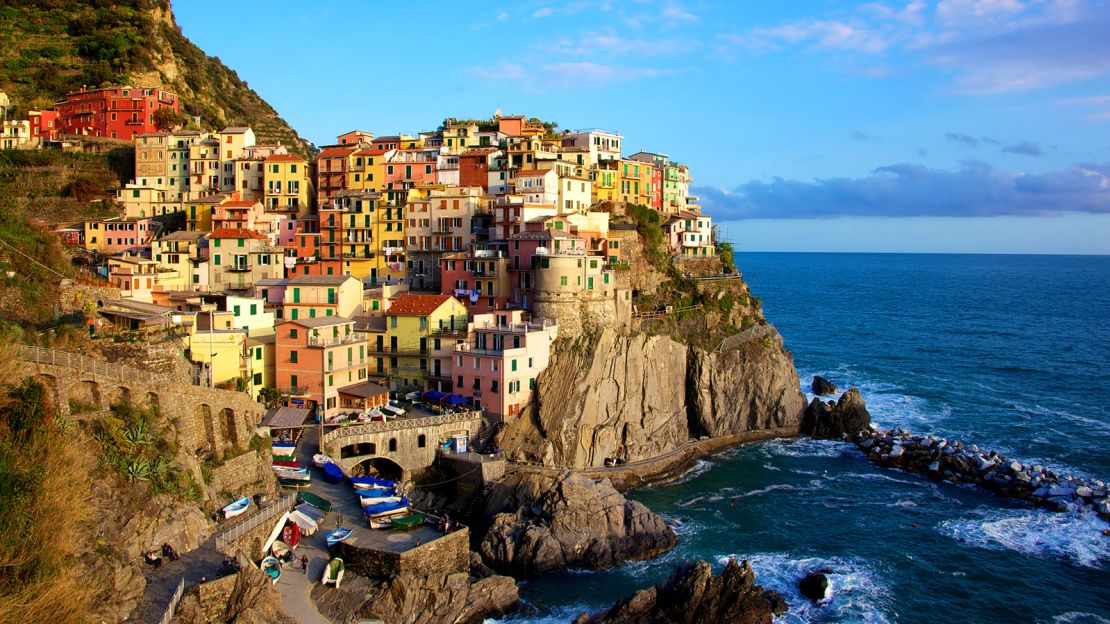
The five pastel villages of Cinque Terre trace their history to the early medieval times, hugging dramatic cliffs over the sea and crisscrossed by narrow paths that find ways across seemingly impregnable territory.
Gardens carved into the hillside over two millennia are now as much a part of the landscape as the castles and churches that rise up in full “Game of Thrones” style.
Cars have been banned and plans are underway to limit tourist numbers, helping the soft colors by the blue sea regain some of their ancient magic.
12. Provence, France
Summertime is lavender season in Provence, when the hilly fields bloom in world-famous purples whose smells are as beguiling as the colors.
The fields are boldest in June and July, but in August the distilleries gear up, producing all manner of products with the flowers’ fragrance.
Seeing fields of purple that would normally be full of greenery creates jarringly beautiful moments that remind us of nature’s many possibilities.
13. Tulip fields, Holland
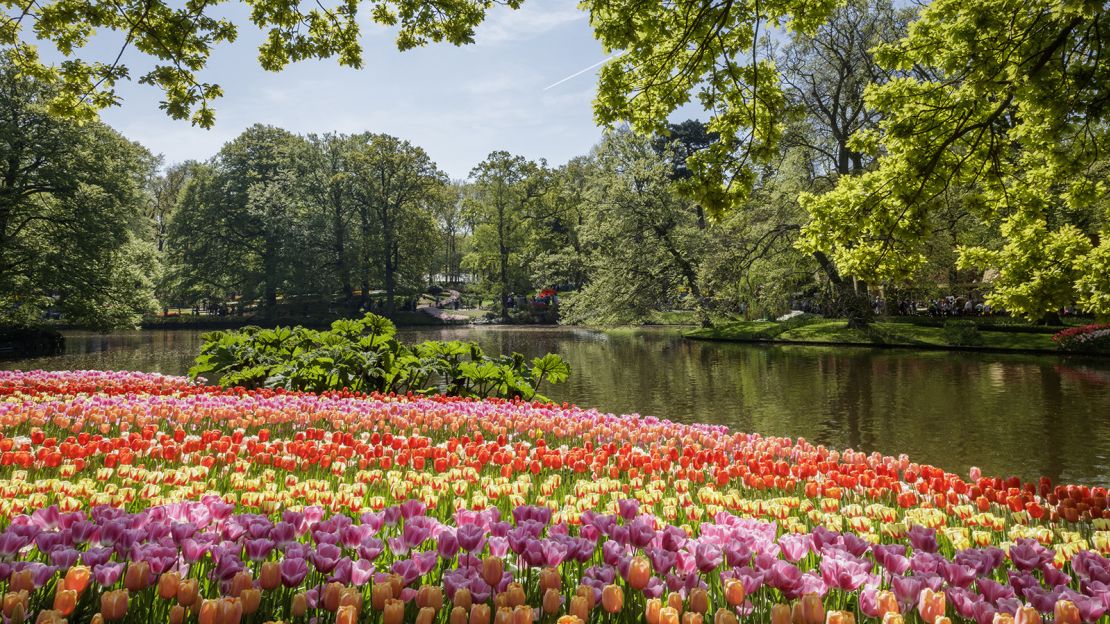
At the end of spring, usually around late April, Holland’s tulip fields reach their peak.
They’re not the only flowers worth visiting.
Holland also grows hyacinths and daffodils and other colorful blossoms, but the tulips boast more variety and quantity. The rows of colors line the countryside like crayons spread on the floor.
When they’re blooming, it only takes a bicycle to explore them.
14. Danakil Depression, Ethiopia
The Danakil Depression is one of the most hostile environments on the planet.
The scorching heat would be oppressive already, but add to that miniature geysers that shoot acid water and ruptures in the Earth that spew fiery molten lava.
The heat causes mirages hovering over the pools and among the Seussian-shaped salt domes. This distant region is called, oddly enough, Afar.
Most of the visitors are geologists and astrobiologists, imagining life on other planets in colors so unusual on Earth.
READ: Ethiopia: Hot new place in Africa for travelers?
15. Lake Natron, Tanzania
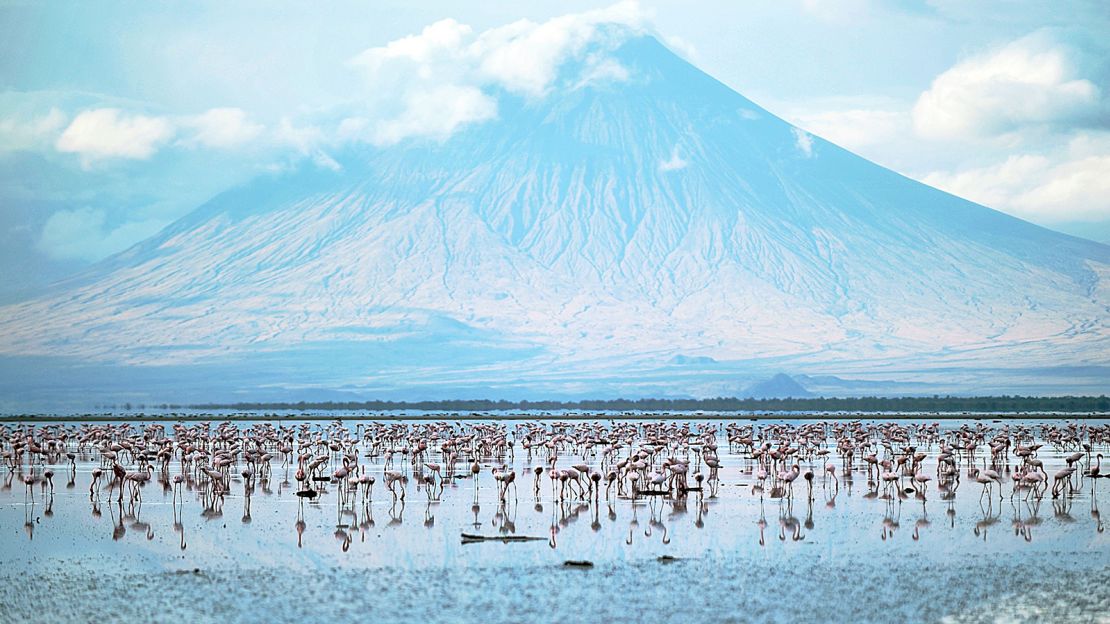
The water in Lake Natron is a toxic mixture of salt and soda.
A few fish can survive around the edges, but the lake is mostly home to microbes that turn the water into a shocking red color, laced with salty crust that covers the surface in strands of white and pink.
Birds or other animals with the misfortune to die in the water get covered in a chalky coating of sodium carbonate, creating the illusion that their bodies turned to stone.
16. Rio de Janeiro, Brazil
Rainbow colors splash across the Praça Cantão in Rio’s Santa Maria favela, washing over the masonry in stripes.
The paint brought the plaza together in a single vision for the neighborhood and changed the way the rest of the city saw it.
Santa Maria is now part of the tourist circuit, and the project led by Dutch artists Jeroen Koolhaas and Dre Urhahn has now spread around the world, with cleverly designed murals transforming rough neighborhoods.
17. Zhangye Danxia, China
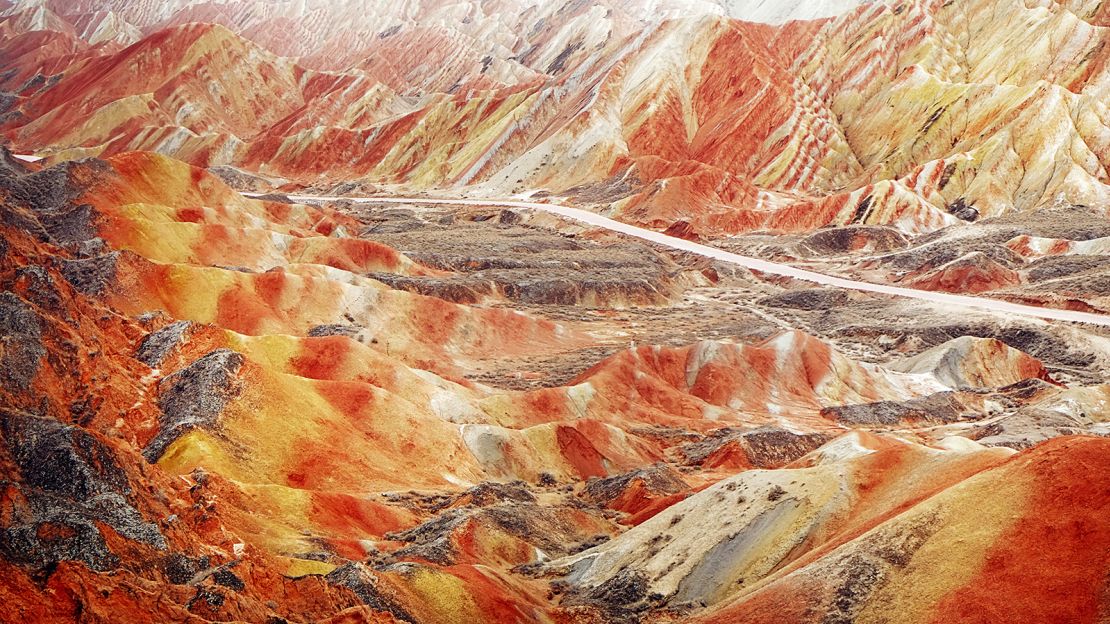
The Rainbow Mountains of China, in the Zhangye Danxia Landform Geological Park, look like an accident, as if giant children spilled their paint buckets down the slopes in streaks of blue, yellow, red and green.
The colors come from iron and other minerals mixed into the sandstone hills. The pigments emerged from years of oxidation and erosion that have worn away at the landscape.
18. Annual Umbrella Sky Project, Agueda, Portugal
The umbrellas first popped open in 2011 during Agueda’s art festival, sheltering the town’s streets from the intense summer sun.
Cables connect rooftops to string together the bright umbrellas that light up the sky and cast colored lights on the pavements.
They’re cleverly connected so that they appear to float freely like a parking lot for Mary Poppins’ family reunion. The shade breathes new life into Agueda at a time when the sun would make the streets scorching hot.
READ: Portugal’s Douro Presidential Train: The world’s tastiest rail journey
19. St. John’s, Newfoundland
The Victorian row houses in St. John’s were once drab buildings, as gray as the overcast skies.
But in the late 1970s, a heritage movement caught on, inspiring residents to paint their homes in vibrant shades of blue, red, yellow and orange. The gingerbread trims, shutters and frames popularly took on accent colors that vividly outline the homes.
At some point the name Jellybean Row took hold to describe the streets, which are not a single row but block after block of cheery homes.
20. Kulusuk, Greenland
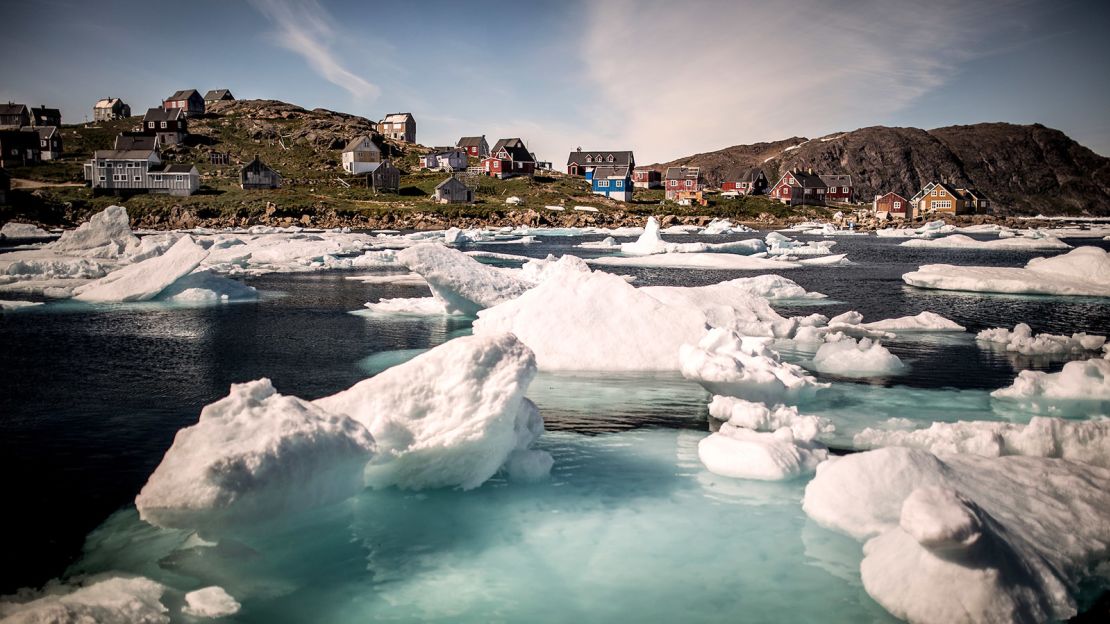
With fewer than 500 residents, Kulusuk is remote even by Greenland’s standards. The island sits among icebergs off the country’s mainland, in the deep blue of the north Atlantic.
It’s a harsh land of hunters, fishers and, increasingly, adventure tourism. Yet the town makes itself seen by painting homes in fire-engine reds, with some oranges and blues.
The dots of color assert the town’s life in a region where few people are hardy enough to hack it.
21. Selangor, Malaysia
The i-City in Selangor is a peculiar blend of a hi-tech development center and an amusement park that includes an ice palace called the Snowalk, where the indoors is kept at freezing temperatures to preserve chambers of ice lit with colored lights.
In the evenings, outdoors in the tropical heat, millions of twinkle lights illuminate the trees in every artificial color imaginable.
It’s a Christmas yard display amped up to the nth degree.
22. Northern Lights
The Northern Lights, and their southern counterparts, flicker and curve in the sky as solar winds get caught in the Earth’s magnetic field.
They’re visible at both poles, most nights when the weather is clear, roughly within the Arctic Circle. The colors change as the solar particles interact with gases in the atmosphere.
The dancing, shimmering lights are impossible to capture fully in photos and often startle first-time viewers.
Police in Iceland have had to warn tourists to stop their cars to watch the lights, after a series of accidents involving drivers so entranced that they couldn’t keep their eyes on the roads.
MORE: Northern Lights: 11 best places to see the aurora borealis
23. Times Square, New York
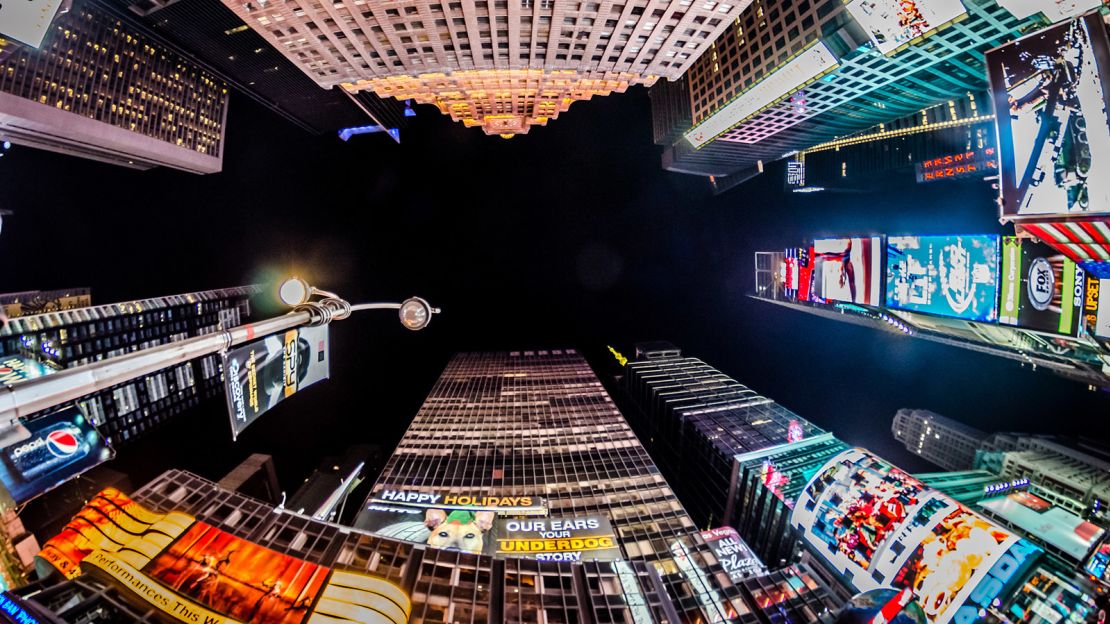
Times Square unleashes American capitalism in a high-wattage display that blasts light across the streets in ever-shifting displays of advertisements, news tickers, and studio lights.
There’s always something to look at, trying to be bigger, brighter and sexier than whatever came before.
The neon lights of old are mostly replaced by brasher new displays so bright that it’s sometimes hard to tell if it’s day or night.
24. Legoland, Denmark
Legoland has set up colonies around the world, but the Billund Resort in Denmark remains the quintessential showcase of the plastic bricks that have engaged children’s minds and jabbed parents’ feet for generations.
Lego has branched into so many varieties of little bricks, tied to films and cartoon characters, that the park provides a welcome reminder of the simple joys of the original building blocks in primary and secondary colors.
Lego’s full variety is on display, with jellybean-colored bricks constructed into castles, villages and animals.
25. Venice
Venice’s canals create mirror images of the buildings lining the waterfronts, so that the oranges, reds and yellows extend above and below.
The Renaissance palaces reflect back in stately tones, but on the island of Burano residents go for vivid neon colors.
Each house must be a different color from its neighbors, and gets repainted every two years to prevent fading.
The community government keeps tabs on it all, ensuring that the houses stay Photoshop-perfect in real life.
READ: Alien landscapes? No, just otherworldly places here on Earth
Griffin Shea is a writer based in Johannesburg, South Africa, where he also runs Bridge Books – an independent bookstore in an old, columnated bank building
























